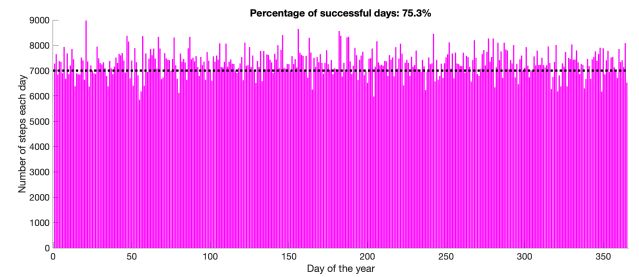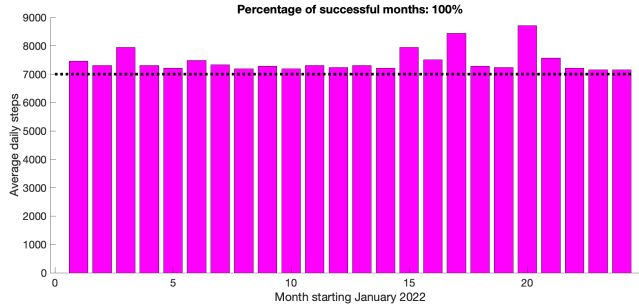Motivation
To Keep Your Resolutions on Track, Focus on Monthly Trends
Focusing on monthly rather than daily trends can lead to greater success.
Updated January 3, 2024 Reviewed by Ray Parker
Key points
- Resolutions are difficult to maintain.
- Keeping monthly trends (rather than daily numbers) could increase your success rate.
- Focusing on monthly trends allows for slack while maintaining good overall performance.
As 2024 begins, many of us are looking ahead and making bold resolutions to follow this year. I am also reflecting on an old year's resolution I set a few years back.
In December 2021, I wrote a Psychology Today post with some tips on how to make your resolutions stick. In it, I argued that (1) setting shorter-term goals (like 90-day goals instead of 365-day goals) and (2) setting trend-based goals, for example, focusing on monthly averages rather than daily numbers, could lead to greater success.
Today, I want to explain why this strategy makes sense from a statistical point of view and also give an update on how my resolution has kept up.
Suppose I resolved on January 1, 2022, to start walking at least 7,000 steps daily. How likely would I meet this goal all 365 days of the year? Knowing myself, I would say it is extremely unlikely. There would surely be days when walking 7,000 would prove extremely inconvenient (bad weather, too much work, travel, etc.). If I were to judge my success at the end of 2022 based on the percentage of days in which I met my daily goal, I would be lucky to end up with a success rate of 80 percent.
But what if, instead, I defined success based on the percentage of weeks out of the year that I achieved an average daily step count of at least 7,000? Or, what if success were defined based on the percentage of months out of the year I achieved an average daily step count of at least 7,000?
Measuring Daily vs. Weekly vs. Monthly Success
To find out, I ran a simulation of this process, making two main assumptions:
Assumption 1: I would aim for a target of 7,300 daily steps to allow for some slack.
Assumption 2: The standard deviation (how much would I tend to fluctuate from my target) would be plus or minus 500 steps on average.
Given those assumptions, the simulation predicted the following daily, weekly, and monthly success rates:

Measured daily, my success rate would be 75.3 percent.

Measured weekly, my success rate would be 92.3 percent.

Measured monthly, my success rate would be 100 percent.
With the same data, one can derive three very different measures of success. The statistical reason behind this is that the standard error (how much an average value deviates from the expected average value) decreases as the number of sample points increases.
In this case, the longer the period I average over (one week, one month), the smaller the variability in the average daily step count. This means that I will have a greater "success rate" if I measure success based on month-long averages instead of on daily performance.
Of course, this is a statistical argument. The simulation gives slightly different results each time it's run. The important thing is, how did I do in reality? Below, you can see my actual daily step counts (averaged monthly) for the two years between January 2022 and December 2023.

In conclusion, yes, it is possible to achieve 100 percent success if you measure your success monthly.
Here's to a successful 2024.


